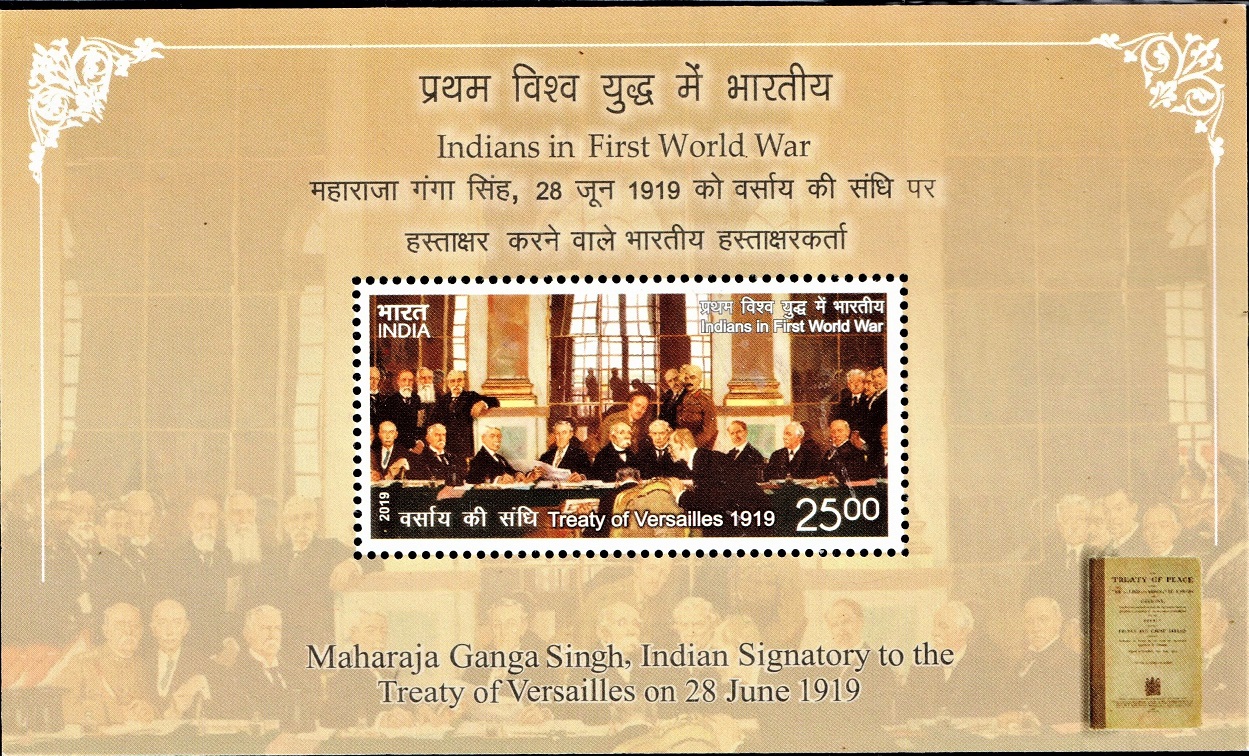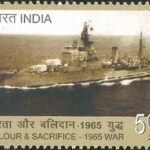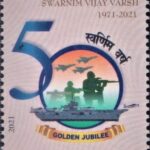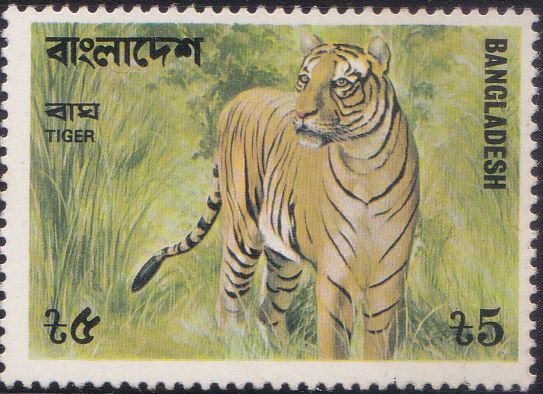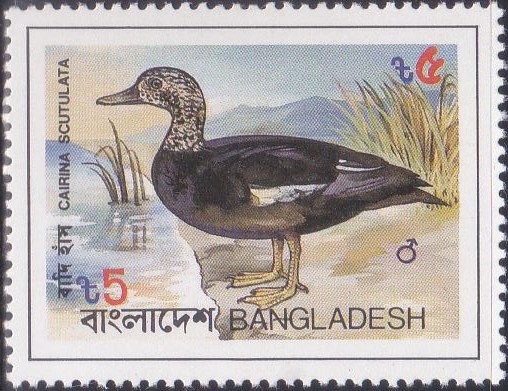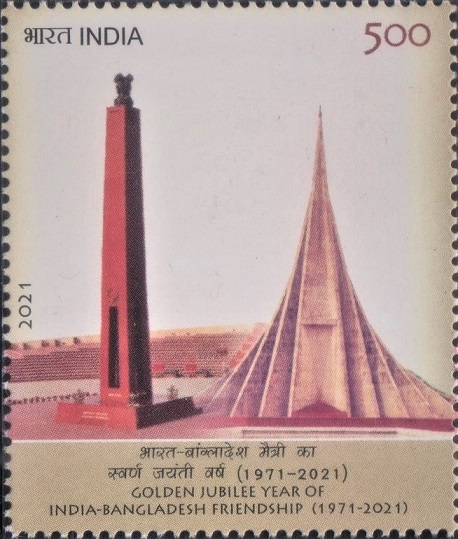
India-Bangladesh Friendship
A commemorative postage stamp on the Golden Jubilee Year of India–Bangladesh Friendship (1971-2021) :
 Issued by India
Issued by India
Issued on Mar 27, 2021
Issued for : Written with indelible ink, the story of the steadfast India–Bangladesh friendship has expanded and strengthened over the last fifty years. The stamp is a dedication to this eternal friendship.
Credits :
Stamp/FDC/Brochure : Smt. Nenu Gupta
Type : Stamp, Mint Condition
Colour : Multi Colour
Denomination : 500 Paise
Stamps Printed : 504000
Printing Process : Wet Offset
Printer : Security Printing Press, Hyderabad
About :
- In 2021, India and Bangladesh commemorate 50 years of their close fraternal friendship, based on deep historical ties, mutual respect and trust. Sharing a long land boundary, both countries also share traditional civilizational links and are intricately bound by history, language, culture and people-to-people ties. Over the past five decades and especially in the last few years, the relationship has rapidly transformed into a vibrant partnership spanning development cooperation, multi model connectivity, trade and commerce, health cooperation, energy, joint development of shared resources, security and defence ties, youth engagement, and much more. With the strength of this partnership being based on a shared history and sacrifice of both peoples, the relationship enters a historic phase this year with the ‘Shonali Adhyay’ being jointly scripted under the visionary leadership of Prime Minister of India, Shri Narendra Modi and the Prime Minister of Bangladesh, H.E. Sheikh Hasina.
- India and Bangladesh together celebrate two other important anniversaries this year. India joins Bangladesh in celebrating Mujib Borsho, the birth centenary celebrations of ‘Jatir Pita’, Bangabandhu Sheikh Mujibur Rahman who led his country to freedom from oppression and injustice and towards a sovereign, prosperous, progressive and secular society. In this struggle, India stood by Bangladesh and its people as a close friend and supported their fight for liberation. Being the first to recognize an independent Bangladesh, India extended extensive political, diplomatic and military support to the people’s struggle. This year, India and Bangladesh also celebrate the 50th anniversary of the 1971 Liberation War, where the Indian armed forces fought shoulder-to-shoulder with the Muktijoddhas, and the millions who made the ultimate sacrifice for their motherland. Besides hosting more than ten lakh refugees as an extended fallout of the 1971 Liberation War, thousands of Indian soldiers, sailors and airmen sacrificed their lives for the independence of Bangladesh.
- In this spirit of friendship and solidarity, India is issuing a Commemorative Postage Stamp on ‘India-Bangladesh Friendship’ depicting the National War Memorial, New Delhi, India and the Jatiyo Smriti Soudho or the National Martyrs’ Memorial, Savar, Bangladesh.
- The National War Memorial at New Delhi, India honours soldiers of the Indian armed forces who sacrificed their life in the service of the nation. Spread over forty acres, the memorial is built in the ‘Chakravyuh’ formation, which encircles an ‘eternal flame’ at the centre of the central obelisk. Built in the form of four concentric circles, each such Chakra signifies different values of the Indian Armed Forces: immortality, bravery, sacrifice and protection. The circles have displays of the main battles fought by India and also names of each of the casualties inscribed therein, including during the 1971 War. Upholding the spirit of unity and patriotism, it is a pilgrimage site for millions of Indians.
- The Jatiyo Smriti Soudho, or the National Martyrs’ Memorial at Savar (near Dhaka), Bangladesh is dedicated to the heroic struggle of the millions of patriots who laid down their lives in Bangladesh’s freedom struggle. The monument with its pointed spire symbolizes the victory of the people of Bangladesh in the face of mass atrocities and oppression by the Pakistani regime. It also symbolizes the link between the shaheed, the living freedom fighters and the patriotic masses. The 150-feet high tower tapers upwards on seven isosceles triangles signifying the various stages of the national independence movement of Bangladesh, starting with the Language Movement of 1952 and ending in victory in December 1971.
- The complex comprises an artificial lake, twin bridges and a reflecting pool, set amidst lush greenery. The twin bridges lead to the most sacred part of the monument, where ten mass graves of martyrs are preserved as a mark of respect to the countless unknown freedom fighters who laid down their lives for Bangladesh’s future.
- Text : Ministry of External Affairs, Government of India.
Subscribe
Login
0 Comments
Oldest


